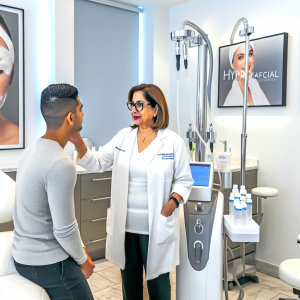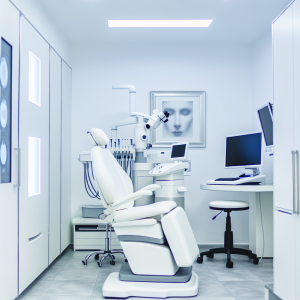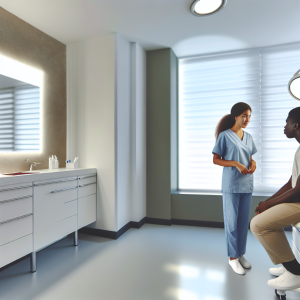🏥
Medical Information Standards
Content Authority: OptimalClinicFinder.com is a comprehensive medical directory platform connecting patients with qualified PRP Hair Restoration providers. Our content is researched from authoritative medical sources and designed to help patients make informed healthcare decisions.
What is PRP Hair Restoration and How Does it Work?
PRP Hair Restoration is a cutting-edge medical treatment that harnesses your body’s natural healing mechanisms to stimulate hair growth and combat hair loss. PRP stands for Platelet-Rich Plasma, a concentrated portion of your blood that contains a high concentration of platelets, growth factors, and healing proteins.
The treatment involves drawing a small amount of blood from your arm, processing it in a centrifuge to separate and concentrate the platelets, then injecting this platelet-rich plasma directly into areas of the scalp experiencing hair loss or thinning.
💡
Did You Know?
Clinical studies show that PRP Hair Restoration patients achieve excellent results when combined with professional-grade aftercare products.
The Science Behind PRP Hair Restoration
Platelets contain numerous growth factors including platelet-derived growth factor (PDGF), transforming growth factor-beta (TGF-β), vascular endothelial growth factor (VEGF), and insulin-like growth factor (IGF-1). These growth factors play crucial roles in tissue repair, cell proliferation, and angiogenesis (formation of new blood vessels).
When injected into the scalp, these growth factors stimulate dormant hair follicles, improve blood circulation to the scalp, and extend the anagen (growth) phase of the hair cycle. This process can lead to increased hair density, improved hair thickness, and reduced hair shedding.
FDA Status and Clinical Applications
While PRP therapy is FDA-approved for various medical applications including orthopedic and wound healing treatments, its use for hair restoration falls under the practice of medicine, allowing qualified physicians to use it off-label for hair loss treatment.
Clinical studies have shown promising results for PRP hair restoration, particularly for androgenetic alopecia (male and female pattern baldness). A 2019 systematic review published in the Journal of Cosmetic Dermatology found significant improvements in hair count and thickness in patients treated with PRP.
💡
Quick Tip
PRP Hair Restoration works best when combined with healthy lifestyle choices for optimal results.
The PRP Hair Restoration Consultation Process
A comprehensive consultation is essential before beginning PRP hair restoration treatment. During your initial appointment, a qualified provider will:
- Conduct a thorough medical history review
- Perform a detailed scalp examination
- Assess your hair loss pattern using the Norwood or Ludwig scale
- Discuss your goals and expectations
- Review any medications or supplements you’re taking
- Explain the treatment process and potential outcomes
- Provide detailed cost estimates
- Schedule follow-up appointments
Determining Candidacy
Ideal candidates for PRP hair restoration typically include individuals with:
- Early to moderate hair loss (Norwood 1-4, Ludwig 1-2)
- Androgenetic alopecia (pattern baldness)
- Adequate platelet count and function
- Realistic expectations about results
- Commitment to multiple treatment sessions
The PRP Hair Restoration Treatment Process
The complete PRP hair restoration procedure typically takes 60-90 minutes and involves several steps:
Step 1: Blood Collection
A small amount of blood (typically 30-60ml) is drawn from your arm using a standard blood draw technique. The amount depends on the extent of the treatment area.
Step 2: Centrifugation
The blood is placed in a specialized centrifuge that spins at high speed to separate the different components. This process concentrates the platelets, creating PRP with 3-5 times the normal concentration of platelets.
✓
Why Choose PRP Hair Restoration?
●
Clinically proven
●
FDA approved
●
Minimal downtime
●
Long-lasting
Step 3: Preparation
The concentrated PRP is carefully extracted and prepared for injection. Some providers may add activating agents to enhance the release of growth factors.
Step 4: Scalp Preparation
The scalp is thoroughly cleaned and may be numbed with a topical anesthetic to minimize discomfort during injection.
Step 5: Injection
Using fine needles, the PRP is injected into the scalp at specific depths and intervals throughout the treatment area. The injection pattern is customized based on your individual hair loss pattern.
Recovery Timeline and Aftercare
Recovery from PRP hair restoration is generally straightforward with minimal downtime:
Immediate Post-Treatment (0-24 hours)
- Mild scalp tenderness or soreness
- Possible slight swelling at injection sites
- Avoid washing hair for 24 hours
- No strenuous exercise or activities that cause excessive sweating
First Week
- Gentle hair washing with mild shampoo
- Avoid harsh chemicals or hair treatments
- No direct sun exposure to treated areas
- Refrain from alcohol and smoking to optimize healing
Weeks 2-4
- Most patients can return to normal hair care routine
- Some may experience temporary increased hair shedding (normal part of the process)
- Continue following provider’s specific aftercare instructions
Months 3-6
- Initial results typically become visible
- Continued improvement in hair density and thickness
- Follow-up appointments to assess progress
PRP Hair Restoration vs. Alternative Treatments
PRP vs. Hair Transplant Surgery
Hair transplant surgery involves relocating hair follicles from donor areas to balding areas, while PRP stimulates existing follicles. PRP is less invasive, has minimal downtime, but may require multiple sessions for optimal results.
PRP vs. Medication (Minoxidil/Finasteride)
Topical minoxidil and oral finasteride are FDA-approved medications for hair loss. While these require daily use indefinitely, PRP treatments are performed periodically. PRP can be used in combination with these medications for enhanced results.
🏆
Verified Providers Only
All our directory providers are licensed, experienced, and patient-safety focused.
PRP vs. Low-Level Laser Therapy
Both PRP and laser therapy are non-invasive options that stimulate hair growth. Laser therapy requires frequent home use or clinic visits, while PRP involves periodic injections. Some patients benefit from combining both treatments.
⚠️
Safety First
Always consult a qualified medical professional before starting PRP Hair Restoration. Results vary by individual.
Choosing the Right PRP Hair Restoration Provider
Selecting a qualified provider is crucial for safe and effective treatment:
Essential Qualifications
- Board-certified dermatologist or plastic surgeon
- Specific training in PRP hair restoration techniques
- Experience with hair loss evaluation and treatment
- Use of FDA-approved PRP preparation systems
- Proper medical facility with sterile conditions
Questions to Ask Potential Providers
- How many PRP hair restoration procedures have you performed?
- What PRP preparation system do you use?
- Can you provide before and after photos of previous patients?
- What is your protocol for the number and frequency of treatments?
- How do you customize treatment plans for individual patients?
- What are the potential risks and side effects?
- Do you offer combination treatments?
Latest Research and Clinical Studies
Recent studies continue to support the efficacy of PRP hair restoration. A 2023 meta-analysis published in the Journal of Clinical Medicine reviewed 15 randomized controlled trials and found significant improvements in hair count, hair thickness, and patient satisfaction scores.
Emerging research is exploring combination therapies, including PRP with microneedling, adipose-derived stem cells, and growth factor cocktails. These combination approaches may enhance results and reduce the number of required treatments.
Insurance and Financing Options
PRP hair restoration is typically considered a cosmetic procedure and is not covered by health insurance. However, many providers offer financing options:
Payment Options
- Medical financing companies (CareCredit, Prosper Healthcare Lending)
- In-house payment plans
- Credit card payments
- Flexible spending accounts (FSAs) or health savings accounts (HSAs) may sometimes be used
Cost Considerations
While PRP hair restoration requires an upfront investment, many patients find it cost-effective compared to lifetime medication costs or surgical procedures. The total investment for a complete treatment series typically ranges from $3,000 to $8,000.
Expected Results and Maintenance
Most patients see initial results within 3-6 months, with optimal results typically achieved after 6-12 months. The longevity of results varies by individual, but many patients maintain improvements for 12-18 months before considering maintenance treatments.
Factors that influence results include:
- Degree of hair loss at treatment initiation
- Individual response to growth factors
- Consistency with treatment schedule
- Overall health and lifestyle factors
- Concurrent use of other hair loss treatments
Regular maintenance treatments, typically performed every 6-12 months, can help sustain results and continue improving hair density over time.
📚 Medical Authorities & Professional Standards
All PRP Hair Restoration procedures should be performed by licensed medical professionals following established clinical guidelines and safety protocols.
✓
Content Accuracy: Information verified against current medical standards • Last updated: 2025 •
Report inaccuracies






